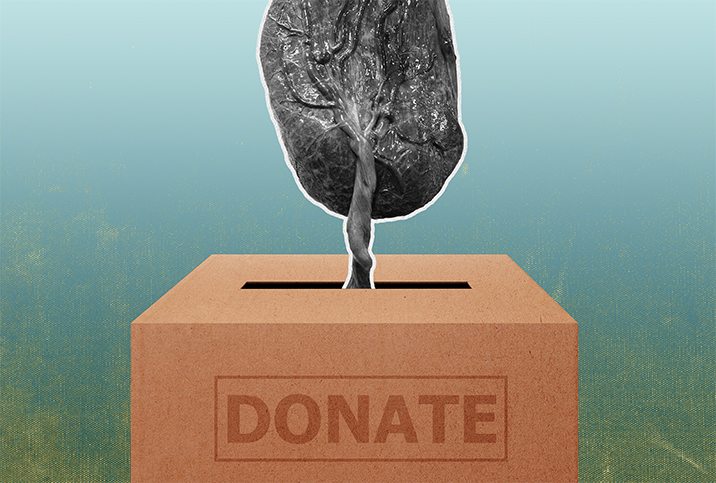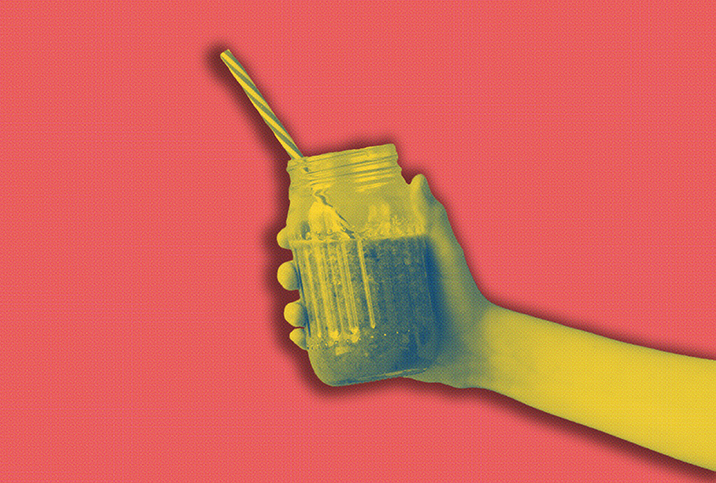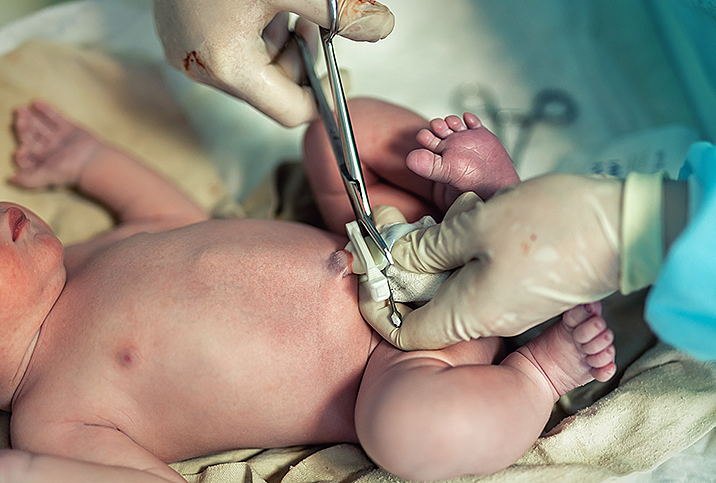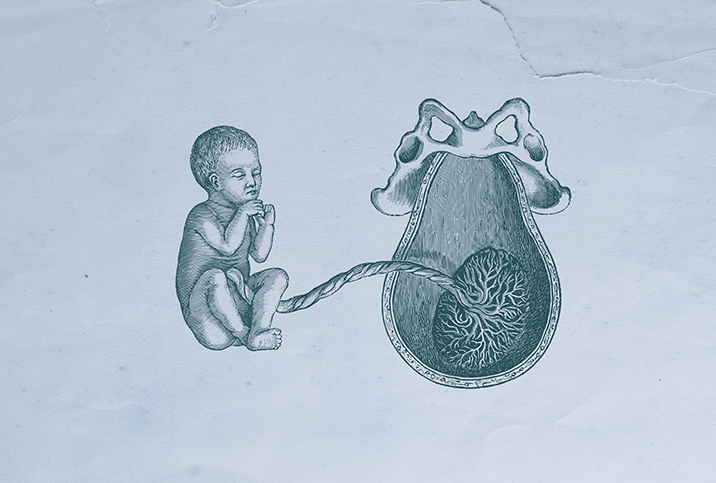Things You Should Know About the Placenta—Including Its Removal
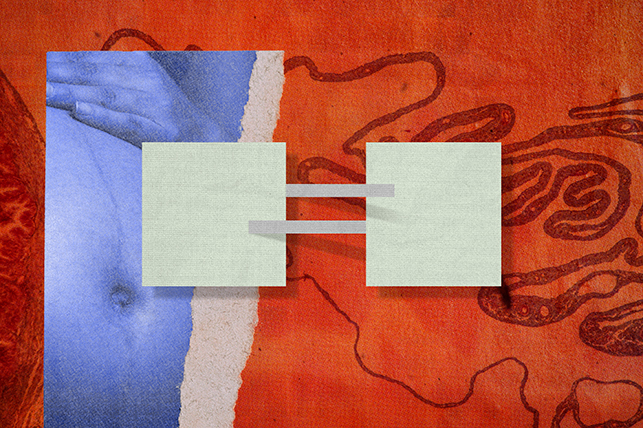
All human beings depended on the placenta at the beginning of our lives, while we were in our mother's belly. Its primary function is to keep the baby healthy, which is why many people call it a lifesaver.
This organ lives as long as the pregnancy lasts, making it the only temporary and disposable human organ. The placenta grows with the fetus and adapts to its needs—reaching about 10 inches long and 1 pound in weight when the baby is born. After delivery, placenta removal is essential.
The placenta develops in the uterus and its function is vital, along with the umbilical cord, for the connection between mother and fetus. This organ is unique, fulfilling the role of multiple organs for the life that is just beginning. For example, it transmits nutrients and oxygen to the fetus via maternal blood through the umbilical cord and regulates endocrine and immune functions.
What is the placenta made of?
As it develops from the fertilized egg, genetically, the placenta contains components of both the female and the male, which means that it is not an organ exclusive to the mother.
"The placenta is the life source for baby. It contains a large amount of blood vessels that provide nutrition and circulation to the baby; this allows the baby to grow and develop its organs appropriately," said Christina Miller, D.O., an OB-GYN who practices at Monarch OB-GYN in Wooster, Ohio.
This organ serving the mother and the developing baby is similar in appearance to a bulging, dark red disc. The outermost part is in contact with the uterine wall, while the fetal side is rich in crisscrossing blood vessels.
What is the purpose of the placenta?
"During pregnancy, the placenta plays the role of the life-support system. The fetus receives oxygen, nutrients and hormones, which are transferred across the placenta. The placenta also transfers waste products back for removal," said Monte Swarup, M.D., a board-certified OB-GYN in Chandler, Arizona, and founder of the vaginal health information site Vaginal Health Hub.
The placenta releases hormones such as estrogen, progesterone and beta-hCG (the hormone detected by urine-based pregnancy tests) and acts as an anchor to the uterus, too, Miller explained.
This organ serves as a filter for the baby, according to Miller.
"The placenta filters nutrients, oxygen and toxins," she said. "Any medications that mom takes, the placenta filters those medications."
Another function is immunological, preventing outside bacteria from reaching the baby. Likewise, it does not allow your immune system to identify the embryo as a foreign body. And after childbirth, it is essential for breastfeeding, preparing the breasts with the production of maternal milk.
Where is the placenta formed?
"The placenta will attach to the uterus wall and the umbilical cord of the baby arises from it," Swarup said. "The placenta usually attaches to the front, back, top or side of the uterus, [and it is formed by the splitting of cells] seven to eight days after sperm fertilizes an egg and burrows deep in the uterine wall."
Depending on where it is attached, how you feel the baby's movements will vary. For this reason, you may have different experiences with each pregnancy. For example, with an anterior placenta, you may begin to feel the baby's kicks a little later.
What are the most common placental conditions?
Regular checkups during your pregnancy will allow you to identify any problems. With all the details close by, your healthcare provider will be able to guide you to a successful pregnancy and delivery.
Most pregnant women should not worry about placenta health. It will be fine if your physician tells you that the pregnancy is healthy and the baby is growing as expected. However, you should consult your doctor immediately if you experience symptoms such as vaginal bleeding, uterine contractions, abdominal pain and back pain. These may be signs of something abnormal.
Treatments may vary according to the condition you have, and obstetric complications may be related to preterm labor and intrauterine growth restriction.
Miller explained a few of the most common clinically significant problems with the placenta.
Low-lying placenta
"[This] is when your placenta is too close to your cervix. This may cause vaginal bleeding during pregnancy," Miller said. "Although low-lying placenta may change your delivery plan, it likely will resolve as you move further through your pregnancy."
Placenta previa
This condition occurs when the placenta covers your cervix—and may cause vaginal bleeding. The way to monitor the placenta is through follow-up ultrasound. Then, if your placenta remains above the top of your cervix, you will need a scheduled cesarean section. In the meantime, during a pregnancy with placenta previa, you should avoid vaginal intercourse, Miller explained.
Placenta accrete
In this case, your placenta has anchored to your uterus too deeply, making it difficult to remove the placenta after delivery. Your doctor will follow up with an ultrasound and you will need a cesarean section.
"Your doctor will discuss the risks of hysterectomy with you," Miller added.
Other placental conditions include placental abruption—the placenta detaches (totally or partially) from the uterine wall too early—and placental insufficiency, when the placenta doesn't make an adequate supply of oxygen and nutrients. The latter prevents the baby from developing properly.
What can impact the health of the placenta?
The placenta can be affected by various factors. According to Swarup, these include:
- Maternal age (especially after 40)
- Water break before labor
- High blood pressure
- More than one baby
- Blood disorders, such as clotting
- Uterine surgery previously, such as C-section or removal of fibroids
- Placenta issues with a previous pregnancy
- Use of substances by mother (smoking or drugs)
- Trauma of the abdomen
What happens to the placenta at birth?
The placenta is delivered a few minutes after the baby is born. If the placenta is not out, labor is not over. During a vaginal delivery, you will experience mild contractions following the baby's exit through the vaginal canal. If you have had a cesarean section, your OB-GYN will remove the placenta as part of the procedure.
"In vaginal childbirth, your provider will press on your abdomen to massage your uterus. This will help the placenta detach from your uterus and prevent you from bleeding. Patients with a cesarean section will have a similar experience. Your provider will massage your abdomen to deliver your placenta and prevent you from bleeding," Miller said.
On rare occasions, the placenta is not completely delivered, with part of it remaining in the uterus. The consequences include pain, bleeding and infection, which can lead to further complications. Your healthcare provider will carefully check to make sure your placenta is intact, if it is not, they will need to remove the remainder.












